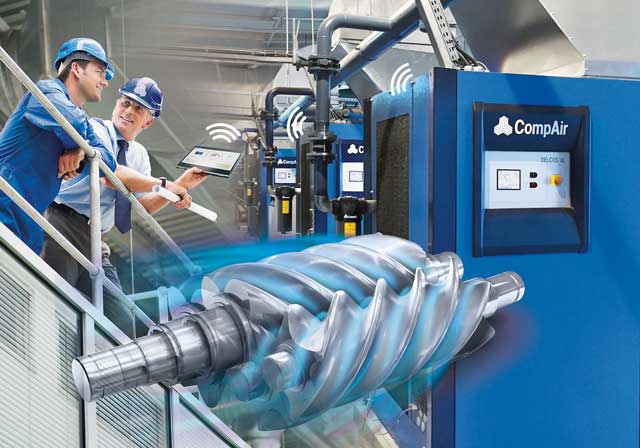During the lockdown it is even more essential to keep existing plant at peak performance. Musa Jobarteh, Ingersoll Rand aftermarket distribution development manager for the UK, Ireland and Northern Europe, offers some advice.

Lockdown measures and months of economic uncertainty may have delayed some business’s capital investment plans. Despite this, it is vital to make sure that essential compressed air plant and equipment is still performing reliably.
The following principles will help in optimising the efficiency of existing installations, to make sure a compressor system continues to off er reliable performance and best value, and minimising whole-life costs.
Fix unnecessary leaks
Air leaks are the leading cause of energy loss in industrial air systems, wasting as much as 20 to 30% of the system’s output.
The Carbon Trust reports that a leak as small as 3mm can cost over £700 annually in wasted energy. One solution is a simple leak detection survey, which can identify any problems quickly so remedial action can be taken.
Alternatively, a flow meter is a reliable means of evaluating compressed air generation and downstream inefficiency costs. Finding and repairing one leak could potentially save enough money to cover the cost of the meter. Another solution is an energy audit, which can help identify any leaks and make sure these are managed effectively.
Genuine parts
To maintain the efficiency of a compressor it is critical to invest in genuine spare parts and lubricants, rather than non-genuine alternatives.
Non-genuine filters, for instance, are more likely to have reduced dust and dirt-holding capacities, which means contaminants can easily enter the system. Alternatively, a non-genuine lubricant can place extra demands on the filter element, resulting in dust and other particles coming into contact with internal compressor components, invariably leading to a deterioration in performance.
Recover heat
As much as 94% of compressor-generated heat is lost to the atmosphere, but this heat can be recovered through a variety of processes. These include installing an energy recovery unit that is fitted to the oil circulation system, or using the waste heat in space heating – recirculating warm air from the compressor to a local area. This energy can also heat water supplies in manufacturing processes where heated water is required, such as central heating, hot water washing and steam systems.
Size the system correctly
A key means of reducing a compressor’s total lifecycle costs is to make sure it is sized correctly for system demand.
Engineers need to know the maximum and minimum air pressures and the compressed air fl ow required by the system. On existing systems, this information can be measured by installing a datalogging device, which audits and saves the required data. The data can then be used to select the right compressor for the job, eliminating the risk of specifying above or below the system’s requirements.
Take advantage of insights
The internet of things and data analytics can help operators to see how efficiently a compressor is running, and whether any improvements can be made. This will not only help highlight any potential issues now, but also enable operators to forecast potential future problems, based on deteriorating machine performance.
Predictive maintenance models based on real-time data can be established to help reduce energy consumption, improve process efficiency and minimise any risks. Industry averages suggest energy costs account for more than 80% of a compressor’s total cost of ownership. By taking a whole system approach to compressor efficiency, operators can achieve significant cost savings and performance gains.
www.IRCO.com | 01527 525522

